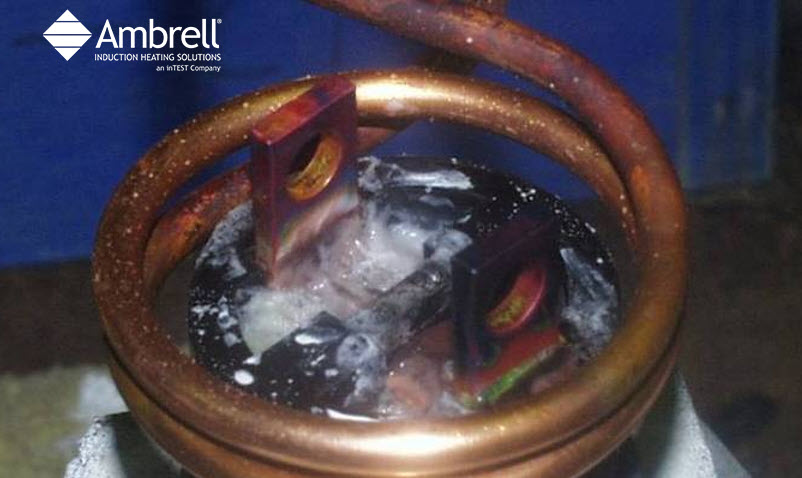Curing Material on an Aluminum Mandrel
Objective Heat a customer supplied aluminum cylinder to 80-120°C for a material curing application. More application notes
Processes
Processes: More
Processes: More

Industries:
Industries: More
Industries: More
Industries: More

Products:
Products: More
Services:
Services: More

Learn:
Learn: More
About:


A client came to THE LAB at Ambrell needing to braze a joint between a copper lug and nickel-plated copper pins on a pressurized heater connector. The target temperature was 1175-1375 ºF (635-746 ºC). THE LAB determined that an Ambrell EASYHEATTM 10 kW, 150-400 kHz induction heating power supply would meet the client's objectives.
More Brazing Application Notes
A two-turn helical coil was designed to heat the copper lugs and nickel-plated copper pins for one minute, which was the client's goal. A clamp was used in production to hold the copper lugs in place for brazing. Induction offered a number of benefits for this brazing application including:
If you have an application you'd like assessed, contact THE LAB to take advantage of complimentary induction heating application testing from our expert team. 

Objective Heat a customer supplied aluminum cylinder to 80-120°C for a material curing application. More application notes

In today’s manufacturing landscape, efficiency, precision, and sustainability are critical. Induction heating—a process that uses electromagnetic...

When it comes to many manufacturing processes, including this forging application, precision and efficiency are critical. Traditional heating methods...